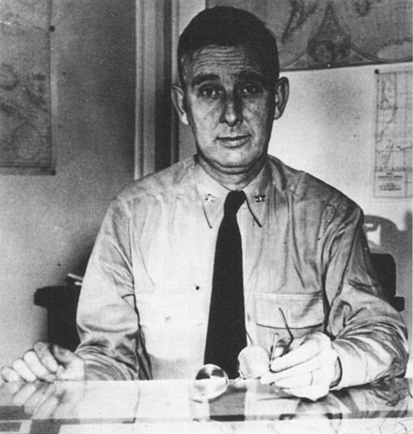Organized against the Imperial Japanese Naval armada were Task Forces 17 and 11, assembled around the USS Yorktown (CV 5) and USS Lexington (CV 2) respectively, and a third task force of Australian and U.S. cruisers under Australian RADM John Crace.
RADM Fletcher on the Yorktown was both the Task Force 17 commander and overall tactical commander for all three task forces. Under the plan, RADM Fletcher and TF 17 would rendezvous with RADM Fitch’s TF 11 near Caledonia on April 30, and then proceed northwest to intercept Fifth Carrier Division and the Moresby invasion force.

Back at Pearl Harbor, ADM Nimitz could see that Station HYPO was tracking the Fourth Fleet’s every move. But what neither he nor CDR Rochefort grasped was that some of the estimates by his analysts were problematic, based often on partially decrypted messages that left out crucial information. That was nobody’s fault. Station HYPO’s codebreaker still had recovered only a relatively small percentage of JN-25(b)’s fifty thousand code groups. They believed partially decrypted messages were better than none at all and had grown accustomed to making educated guesses. “You’d have to guess the gaps,” CDR Rochefort told Walter Lord (A). But this could be risky, and some of the decrypts circulated to CINCPAC had the potential to mislead RADM Fletcher.
Between May 3 and 5 (local time), RADM Fletcher received two intelligence reports from CINCPAC that led him to misinterpret, at least for a time, the movements and combat mission of the Zuikaku and Shokaku. One message told RADM Fletcher, incorrectly, that Japanese carrier-based planes would soon raid land targets in northern Australia and some south Pacific islands to pin down Allied naval forces. A second dispatch told him, also incorrectly, that the Fifth Carrier Division was moving to a point southeast of Port Moresby in order to strike Moresby by air on May 7 and 8, two or three days before the projected invasion.
But, as cryptanalysts determined later, ADM Yamamoto had actually ordered the Zuidaku and Shokaku to search for U.S. carriers that might be in or near the Coral Sea.

The misinformation reported to RADM Fletcher stemmed from a flawed reading of ADM Yamamoto’s original message, which, Station HYPO admitted in its decrypt, was “difficult to read due to lack of code groups.” Station HYPO had filled in some blanks erroneously and, in doing so, inadvertently reported to RADM Fletcher that IJN planes would be hitting land targets when in fact they were looking for him!
A third report might also have led Fletcher astray. After attacking Tulagi on May 4, RADM Fletcher took the USS Yorktown south into the Coral Sea to rendezvous with RADM Fitch’s Lexington and ponder his next move. RADM Fletcher now received information from CINCPAC based on another Station HYPO decrypt, this one indicating that if the Japanese found the U.S. task force, Fifth Carrier Division would link up with the invasion force in the Solomons, and then proceed southward, presumably toward Jomard Passage through the Louisiades Archipelago.
What RADM Fletcher didn’t know, nor did CDR Rochefort or ADM Nimitz, was that the order Station HYPO had decrypted putting the carriers near Bougainville applied to an altogether different Fourth Fleet element, the MO main force, not the MO striking force with its two carriers. Nor did they know that Fifth Carrier Division was approaching not from the northeast, but from due north on RADM Fletcher’s right flank. Around noon on May 6, the Fifth Carrier Division was three hundred miles away and closing.
(A) John Walter Lord, Jr., was an American author, best known for his documentary-style non-fiction account A Night to Remember, about the sinking of the RMS Titanic.
Source: Elliot Carlson, “Joe Rochefort’s War”
Featured picture is CDR Joe Rochefort, USN


6 May 2020 at 17:27
Great reading. thanks.
LikeLike